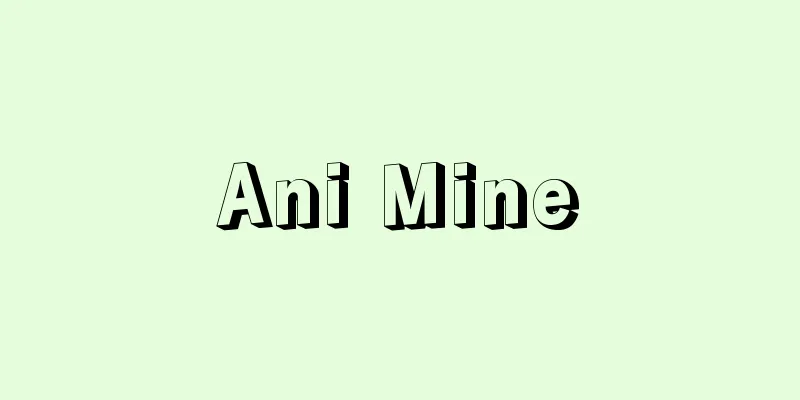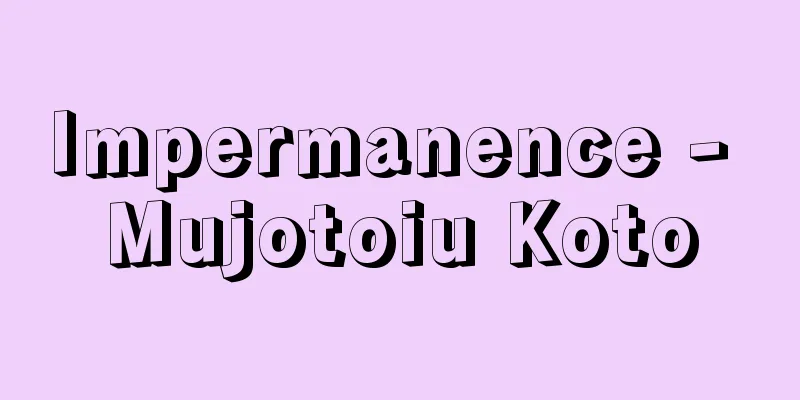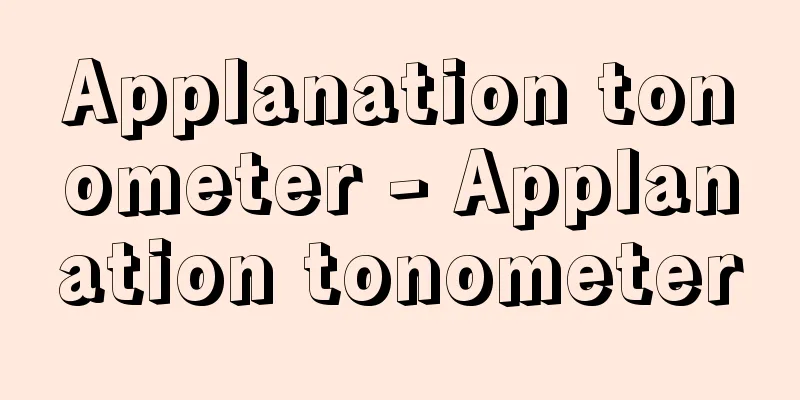Ani Mine

|
A general term for the gold, silver, and copper mines located in the upper reaches of the Ani River in Ani Town, Kitaakita County, Akita Prefecture (now Kitaakita City), Akita County, Dewa Province. The Yukuchinai Silver Mine, discovered in 1575, was the first to be opened, followed by the Shichijumai Gold Mine in 1614 by Gorozaemon of Yamasaki and others. Yukuchinai, Shichijumai, Itakizawa, and other mines were operated as gold mines during the Keicho period (1596-1615) and as silver mines from the mid-Kan'ei period (1624-1644), but began to decline from the mid-17th century. Instead, copper veins were discovered at Kosawayama and other places, and operation thereafter centered on copper mines (Ani Copper Mine and Akita Copper Mine). Initially, the mine was contracted out to prospectors, but in 1670 it was managed by Osaka townsman Hokokuya Zen'emon, and in 1696 it was directly managed by the Akita Domain. However, due to management failure, it was returned to Oyama the following year, and in 1702 it was managed by the Domain again. In 1764, the Shogunate ordered the transfer of 10,000 koku of land around the Ani Copper Mine to the Shogunate, but this was revoked due to opposition from the Domain. At the beginning of the 18th century, the mine produced more than 2 million jin per year, peaking at about 2,500 workers at Ozawayama, but production declined thereafter, dropping to about 700,000 jin at the end of the Edo period. During this time, a silver mining town was formed along the Ani River, and in 1774 a domain-run silver mill was built in Kagoyama (now Noshiro City, Akita Prefecture). After the Meiji Restoration, it came under Akita Prefecture management, and in 1875 it became government-run, and after improvements were made to mining and metallurgical technology, it was sold to Furukawa Ichibei in 1885. The mine was temporarily closed in 1931, but mining resumed in 1933 as the Gold and Copper Mine. After World War II, the mine was repeatedly closed and reopened, eventually closing in the mid-1960s. Source : Heibonsha Encyclopedia About MyPedia Information |
|
出羽国秋田郡,現秋田県北秋田郡阿仁町(現・北秋田市)の阿仁川上流部にあった,金山・銀山・銅山の総称。1575年発見と伝える湯口内(ゆくちない)銀山の開鉱が最も早く,次いで1614年山先(やまさき)の五郎左衛門らにより七十枚(しちじゅうまい)金山が見立てられた。湯口内・七十枚・板木沢(いたきざわ)などは慶長期(1596年−1615年)には金山,寛永(1624年−1644年)中頃からは銀山として稼行し,17世紀半ばからは衰退に向かった。これに代わって小沢山(こさわやま)などで銅の鉱脈が発見され,以後は銅山(阿仁銅山・秋田銅山)を中心として稼行された。当初は山師の請負であったが,1670年には大坂の町人北国屋善右衛門の経営となり,1696年には秋田藩の直営となった。だが経営の失敗から翌年には請山に戻り,1702年再度藩営となった。1764年には阿仁銅山周辺1万石の幕府領への上知が命じられたが,藩の反対によって撤回された。18世紀初頭には年間約200万斤以上を産出,小沢山に約2500人の労働者がいたのを頂点に,以後産額は減少し,幕末には約70万斤に落ち込んでいる。この間阿仁川沿いには銀山町が形成され,1774年には籠山(かごやま)(現秋田県能代市)に藩営の銀絞所(ぎんしぼりじょ)が建設されている。明治維新後は秋田県営に移行し,1875年には官営となって採鉱・冶金技術の改善が図られた後,1885年に古河市兵衛(ふるかわいちべえ)に払い下げられた。1931年一時休山となり,1933年金山・銅山として採掘が再開された。第2次世界大戦後も休山と再開が繰り返され,昭和40年代半ばに閉山となった。
出典 株式会社平凡社百科事典マイペディアについて 情報 |
<<: Anigozanthus (English name) kangaroo poo
Recommend
Illustrated Guide to Famous Places in Owari
...Inspired by Yoshinoya Tamehachi's plan and...
Operating revenue
Revenues generated from a company's main busin...
Askol'd i Dir (English spelling)
Prince of Kiev, Russia, before the Rurikid dynasty...
Glossatoren (German: Glossatoren)
Also known as the Glossatoren, this school was fo...
Green vegetable wholesaler - Aomono Donya
...Famous vegetable markets in the early modern p...
Mount Horaiji - Horaijisan
A mountain in Shinshiro City, Aichi Prefecture. I...
In front of the bellflower - In front of the bellflower
...Therefore, no one could distinguish between th...
Fujiwara no Katsunomaro - Fujiwara no Katsunomaro
Year of death: 10 November 9th year of the Kōnin p...
Ribbon - Ribbon (English spelling)
A ribbon-like woven fabric used by women and chil...
Easter Sunday
…The period from Easter to Pentecost is called Ea...
anisakiasis
...Adults are 60-100mm long. The larvae of these ...
Lighting - shomei (English spelling)
It refers to illuminating an object or place with...
Cultivation rights
Generally speaking, it refers to the rights that ...
Gardening soil - Engeiyoudo
...In addition to the above, plant care includes ...
Classes for children with disabilities
Under the School Education Act, it is considered a...









